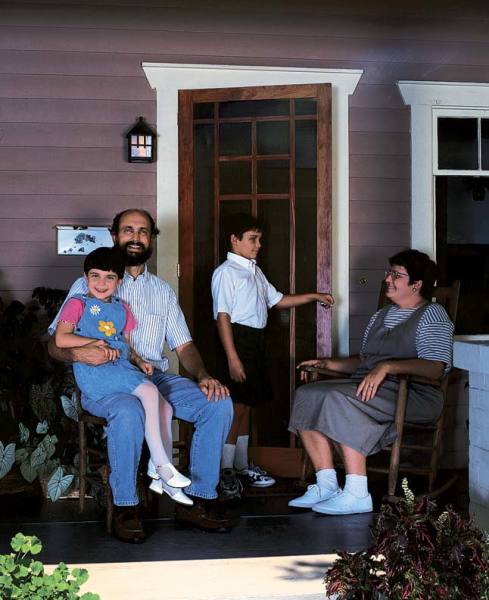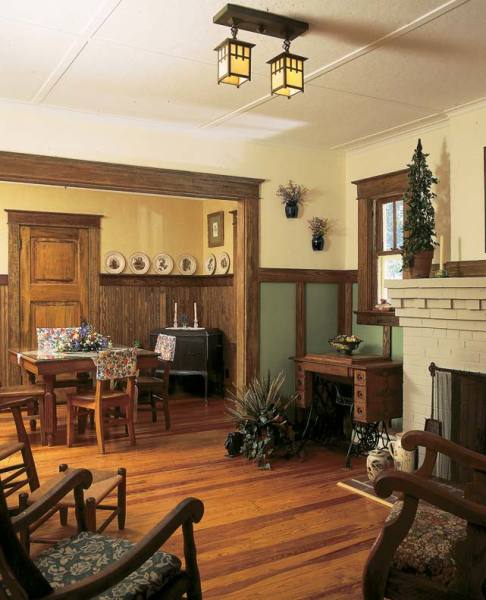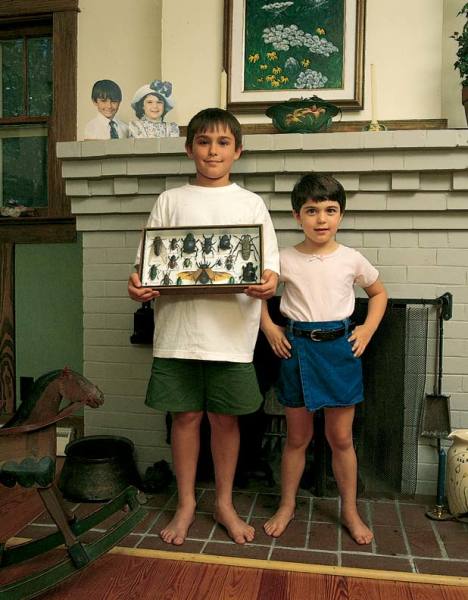
Florida was booming in the 1920s, when this bungalow was built as a “spec” house near Stetson University. The aluminum siding (bottom), and its sinister microclimate, came later.
Insects are a nasty fact of life in Florida, but there’s no reason to create a haven for them by encasing a perfectly sound old house in aluminum. That’s what Sidney and Ginger Johnston discovered after they bought their bungalow in DeLand in 1990. Because the house was infested with termites, they had it tented—enveloped in plastic tarp and fumigated for 24 hours with lethal methyl bromide. The tenting should have spelled the end of unwanted critters in the Johnston household. But it was only the beginning.
For a time, the couple was too busy stripping wallpaper and woodwork to worry about what Florida’s pestilential bug population might be up to underneath the aluminum siding. That changed two years ago, when the Johnstons decided to build an addition. To check the condition of the original pine siding, Ginger tore off an aluminum panel in an inconspicuous spot.
In seconds, she was coated to the teeth with what she thought was black dirt. Encouraged by the discovery of sound wood, the first-grade schoolteacher gritted it out and kept ripping. But a few days later, there was no denying that she was in up to her elbows in decaying roach dung.

When Sidney and Ginger Johnston tore the aluminum siding off their Arts & Crafts bungalow, they freed their daughter, Carlotte (left), from a persistent health problem.
Palmetto bugs, the King Congs of the cockroach world, and small green enolus lizards burst out as she worked. Lizard skeletons and snake skins disinterred themselves from the debris.
“You have this home that for all intents and purposes looks sanitized—from the outside and from the inside,” says Sidney, a historian and preservation consultant. “And yet, between the original and aluminum sidings, you have a whole new environment that you’re not aware of. I don’t think the siding salesmen are telling anybody about this.”
“While all this was going on, our daughter, Charlotte, would wake up every night, come into our room and cough and hack until she threw up,” Ginger says. The spells had been going on for more than a year. When Charlotte slept with her parents, she was fine. If she slept in her room under the open window, she got sick.
In the meantime, Ginger continued to peel her way around the house. “When I pulled the siding off underneath Charlotte’s window, the boards were rotten and there was a huge roach next in there,” Ginger says. “Oh, it smelled so bad. The foam insulation they put underneath was yellowish instead of white. I had to get a chisel and scrape it off the wall.”

The tongue-and-groove wainscot in the dining room and the burlap wainscot in the living room are period enhancements.
The Johnstons were mortified—especially when Ginger came across research that linked the incidence of childhood asthma and other respiratory ailments to exposure to roach feces.
Plans for the addition were put on hold while the Johnstons raced to rip off the rest of the siding. Sidney worked on the soffits and upper reaches of the house, while Ginger laid bare the lower portions. Charlotte and Preston, then 7, collected and stacked the dropped pieces, then took them to the recycling center. When all the siding was down, the Johnstons washed the clapboards with diluted detergent and bleach.
“We were amazed at how quickly Charlotte improved,” Ginger says. “Her recovery was almost overnight once we got the boards cleaned and fixed up.”
With the siding discarded, the Johnstons could see that many of the bungalow’s simple architectural details had been shorn off. “Someone had hacked away the drip cap molding,” Sidney says. “Then, with a power saw, they had clipped and trimmed the ears of all the window lintels and sills.”

Charlotte may have narrowly escaped las cucarachas under the siding, but big brother Preston shelters invertebrates from all over the world under glass. The lowly palmetto bug isn’t among them.
The damage was more than aesthetic. Few crawling insects can navigate around a drip cap or sill, but the can easily penetrate the gap left by its removal. The quarter-round trim under the sills also had been ripped out. “That left a hole 9′ long by 1″ wide under the window in our bedroom,” Sidney says. “Now how many critters were coming into our house through that opening?” The Johnstons shudder to think.
They replaced the drip caps, as well as the triangular “ears” on the window headers. “The diagonal cut on those boards with the extension seemed to be such an important characteristic of the front window, and it was easy to do,” Sidney says.
The couple reopened and restored the front porch, rebuilding the columns and replacing the breeze-blocking sidewalls with simple balustrades. “We never spent any time on the porch when it was enclosed,” Sidney says. “As soon as we did this, it became like a second living room.”
Although the Johnstons had never seen many insects inside their home, there’s even less of a problem now. The only bugs in-house these days are Preston’s. His hoard of creepy crawlies includes cockroaches, spiders, lizards, and a small iguana or two—all of them plastic.
“Preston’s bugs are pretty intense in their own way,” Sidney says. “When I carry Charlotte up to bed, I’ll sometimes step on one and wonder, ‘Well, is this one going to move or not?’ Fortunately they don’t, because they’re not real.”







